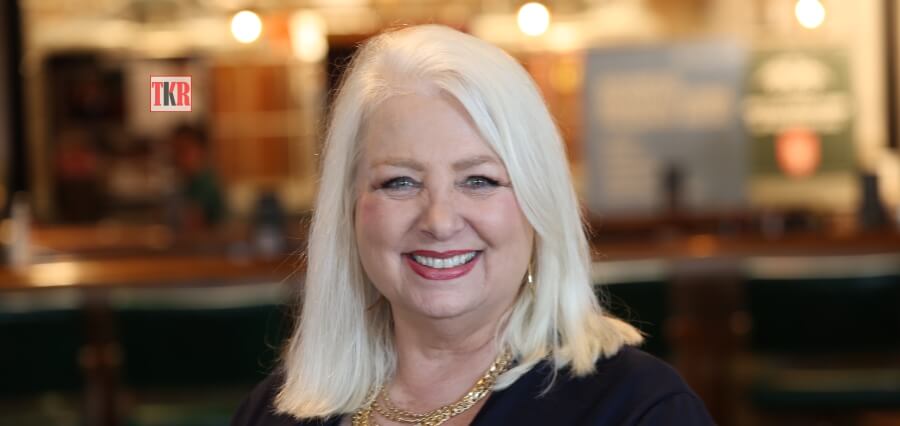Education leaders are the backbone of today’s educational reformations. They form strategies that revolutionize the educational sector, inviting transformations that support and guide the youth. These leaders thrive on creating a student-centric environment with essential qualities like effective communication, community building, empowering teachers, utilizing data and resources, having a vision and plan, and a passion for uplifting society.
Dr. Mary Landon Darden, President and Founder of Higher Education Innovation, LLC (HEI), is a born leader. Since preschool, she has always looked for ways to enhance the tasks she comes in contact with, as she is an “eight” on the Enneagram. This included talking to the headmaster of her nursery school about suggestions for improving the school when she was three years old. She says, “Leadership was part of my DNA; what I had to learn along the way was diplomacy, finesse, collaboration, and teamwork, which took a great deal of trial and error.”
Throughout her life, Dr. Mary naturally gravitated toward the top leadership in almost everything, including employment and volunteer work. She always envisioned the future and the means of getting there. She believes education is the key to turning the tide that lifts all boats globally. She also believes education would enable society to move toward a more developed, just, and sustainable future while curing diseases, poverty, starvation, and environmental issues. She committed herself to education by the time she finished her master’s degree, and this continued through and beyond her doctoral work.
Dr. Mary sees a vast potential frontier for educational development and delivery, which made her feel like an anomaly in higher education; some might even refer to her as a maverick. She is always drawn to them because there is adventure and the most significant potential in the new, unconventional, and experimental arenas.
Elevating the Quality of Higher Education
Every organization runs based on a set of missions and visions that clarify the workings and motives of the venture. HEI’s mission is to “entrepreneur” higher education by helping institutions become more inventive and enterprising so they can make the crucial changes required to sustain their success.
To help meet the needs and demands of society both now and in the future, HEI envisions working in partnership with leaders, institutions, and organizations in higher education to conduct research, create entrepreneurial strategies, and fundamentally transform the future of as many institutions as possible.
Challenges Call for Solutions
In her career, Dr. Mary encountered many challenges. She felt the need to leave the academy after almost 25 years to make the most significant difference in her future.
Change is excruciatingly tricky in higher education. Though they aren’t usually the most entrepreneurial people, those who pursue careers in education are generally astounding people with high standards and values. While most educators she has worked with hold the noble, long-standing higher education system in high regard, they are also hesitant or even afraid of significant change, considering how slowly society and academia have changed over the past several centuries.
However, as HEI became a part of the Industrial Revolution, that significantly changed, and in the internet age, it further accelerated evolution. Following HEI’s footsteps, nearly 3000 for-profit businesses and organizations offering degrees and credentials have upended higher education, and many of them succeeded in doing so. They are meeting a genuine need, mainly because higher education has often failed to acknowledge the vital demands of business and industry, and students need to find gainful employment to support themselves and pay off their student loans.
Building Efficiency in Leadership
In Dr. Mary’s vision of the academy, job and leadership descriptions vary greatly; effectiveness is crucial for these roles. In most situations, a few universal traits often greatly influence effective leadership. These traits are:
- Being kind is crucial for everyone but essential for leaders. To help them become the best versions of themselves and serve as an example of kind leadership, they must be kind and thoughtful to everyone they work with.
- Practical communication abilities should be demonstrated in written and spoken forms. Good communication can facilitate all operations, while lousy communication can impede them.
- The capacity to see potential future paths and opportunities is known as vision. Visionary leaders need to know what’s possible and have the courage to make the required changes. Working cooperatively and creatively with coworkers, mentors, partners, students, and stakeholders is beneficial.
- An exceptional work ethic is the readiness to put in much effort, take on any task, lead by example in achieving necessary objectives, and charge with excellence and dedication.
A Shining Risk Taker
Although Dr. Mary has managed numerous projects, she is incredibly proud of the following ones from her time as a leader:
- Community Development Programs: Mary started at McLennan Community College as the Coordinator of Community Development. With only a few hundred part-time enrolments, it was a small division (primarily because it had never been prioritized and was usually part of a secondary job for various people in continuing education).The newly appointed vice president of instruction asked her if she would like to try leading it, warning her that they would close it down and she would lose her job if she didn’t make significant progress within a year. She seized the chance with gusto. The business had six thousand part-time enrollers five years later, two state marketing awards, and the National Council of Continuing Education and Training’s (NCCET) National Exemplary Award in Community Programs.
- Business and Industry Partnerships: While working as a campus dean for a university in San Antonio, Texas, Dr. Mary formed a relationship with Goodwill Industries, one instance of a particularly fulfilling partnership. With one thousand workers in San Antonio, Goodwill recognized that the new leadership group had little to no college education.She and her team collectively partnered with them to offer a bachelor’s degree in business provided at their headquarters downtown on Mondays each week for four hours each night. The first cohort was filled, and they offered a second cohort that met on Tuesdays. Four years later, most cohort members graduated with their degrees and were ready to advance their careers.
- Entrepreneurial work HEI is engaged in: Mary and her colleagues have created and provided training and development for entrepreneurs to colleges and universities nationwide for the last seven years. Their most significant achievements have been turning around years of declining institution enrollment.Within a year of carrying out an assessment and offering guidance and recommendations, all the institutions they collaborated with saw an increase in enrollment of 20–40 percent. To achieve this, they carefully examined the situation and created a unique success plan for each school. Their accomplishments in workforce development, innovation, philanthropy development, entrepreneurship, program relevancy, and other areas have yielded similar outcomes regarding their product and mentoring.
Proper Implementation of Technology
Technology will play a crucial, fundamental, and even existential role in the future of higher education. Dr. Mary stresses the role that technology plays in everything that HEI does. They firmly believe that institutions will eventually only succeed if they adopt the essential technology that will enable them to become industry leaders. Currently, Artificial Intelligence (AI) is a hot topic in higher education.
Crafting Impactful Learning
Improved learning and growth require a focus on relationship-building, networking, and communication. Important questions must be asked, and connections must be made during learning. “What do you need?” is the most crucial question to pose to any organization, company, or leader in the field. According to Dr. Mary, instead of focusing on the more complex and essential task of identifying needs and creating solutions that precisely meet present and future needs, people in higher education spend far too much time trying to sell outdated products.
“What are your pain points?” is the second question that has to be posed. Higher education should foster collaboration to discover answers, improve approaches, and increase effectiveness.
A Dream for Tomorrow
In the coming years, Dr. Mary sees unprecedented transformation in the field of education. According to her, a select group of wealthy colleges will be able to weather nearly any current adversity. The degree to which higher education changes will mostly depend on how quickly and thoroughly institutions accept the imperative need for radical change. They may hold onto the lead in post-secondary education if they can make significant breakthroughs in innovation and entrepreneurship. If they don’t, they might keep making mistakes and fail like Eastman Kodak and Blockbuster.
With such sharp visions about the educational sector and fantastic leadership skills, Dr. Mary is all set to bring a wave of progressive transformations for the youth.









